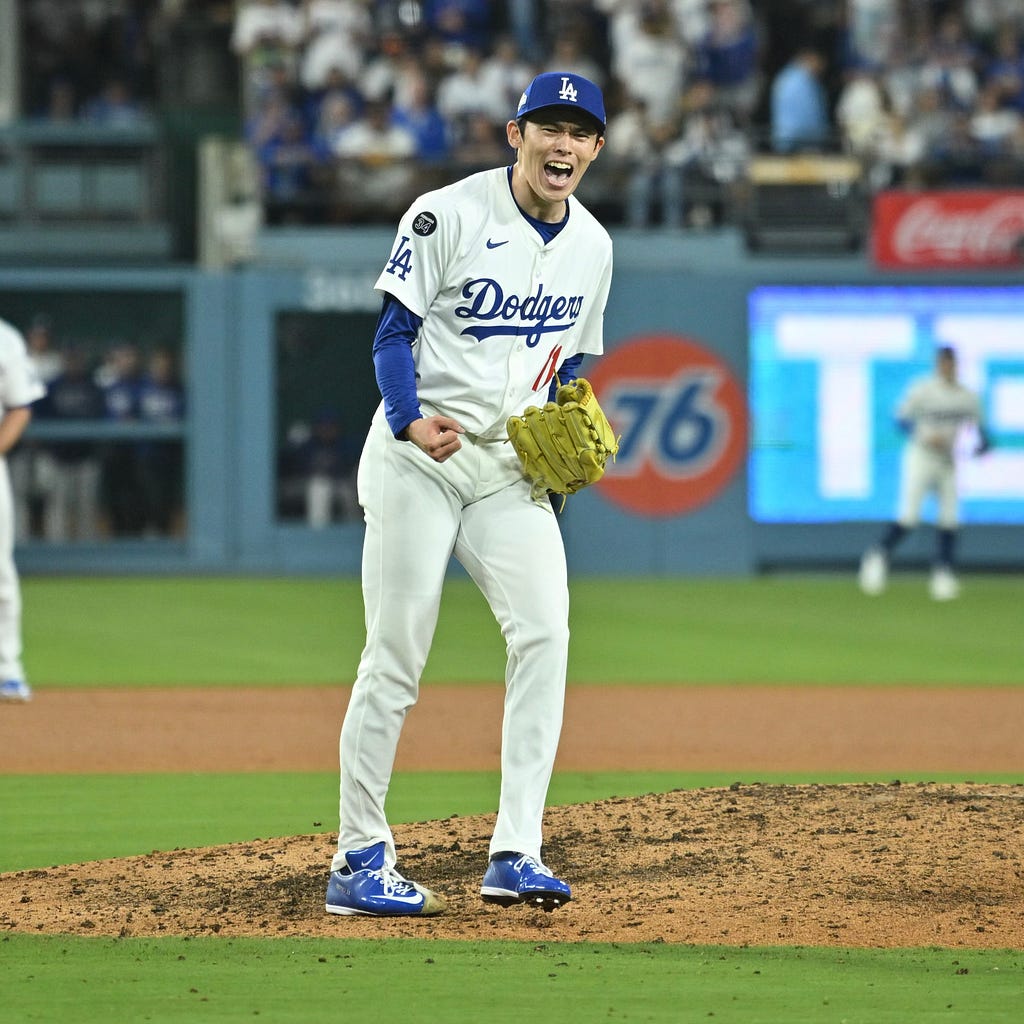
by Cary Osborne
Tucked in the corner beyond the fencing in right field at Arizona’s Chase Field, there was a seemingly quick acclimation going on for starting pitcher Roki Sasaki in late September.
The truth was, the Dodger bullpen had already embraced the 23-year-old from Japan long before the last week of the regular season when he re-emerged as a relief pitcher.
“He became a dawg when he signed here,” said Alex Vesia, a senior member of the Dodger bullpen. “It doesn’t matter the role. If you’re a pitcher, you’re a part of us.”
But Sasaki still had to find success in the role to, first, make the Dodgers comfortable in adding him to a postseason roster as a reliever, and then next, possibly throw him into a critical spot in the postseason.
In three games, he has done all of the above.
By quickly closing out the Reds in the ninth inning in Game 2 of the Wild Card Series on Wednesday, Sasaki — the reliever — showed how he could possibly boost the Dodgers’ chances at making a deep run this October.
“He’s going to get important outs for us,” said President of Baseball Operations Andrew Friedman about Sasaki going forward.
“I trust him, and he’s going to be pitching in leverage,” said manager Dave Roberts. “I don’t think the moment’s going to be too big for Roki.”
It wasn’t just the three outs he earned on Wednesday; it was how he got the three outs that has the industry abuzz.
Sasaki threw seven fastballs — ranging from 99.8 mph to 101.4 mph. He threw 11 pitches, nine for strikes. Sasaki struck out two batters and induced a weak-contact lineout (57.8 mph exit velocity) to end the game.
In three relief appearances (including Sept. 24 in Arizona and Sept. 26 in Seattle), opponents are 1-for-10 against the right-hander with six strikeouts. Sasaki’s strike percentage in the three games is 77.8%.
His strike percentage was 58.3% — 6% below league average — in his eight starts before landing on the injured list in May.
Sasaki — the starter — experienced growing pains in the first two months of the season in his Major League rookie season — positive results like his six-inning performance in Texas on April 19 and difficulties like the five runs he allowed in Arizona on May 9.
Sasaki’s delivery was out of whack. Friedman, when reflecting on the early part of Sasaki’s season, said the young pitcher was trying to compensate for an oblique injury, which led to shoulder soreness.
He was shut down in May.
The Dodgers partnered with Sasaki over the next three months to first let his body heal, then slowly ramp things up from playing catch to throwing hard on flat ground to eventually pitching a lengthy rehab assignment in Triple-A Oklahoma City. Results were OK, but the delivery eventually started to shape into form.
“He was all in obviously on doing that. It was just how to get from A to B,” Friedman said. “(Pitching coaches) Connor McGuiness, Mark Prior and Rob Hill have done an unbelievable job with him. The way he worked coming back made for a really devastating combo in terms of getting him back to the point of what we saw tonight.”
The health and delivery, combined with Sasaki’s willingness and precision in attacking the zone with his electric stuff, have led to impressive results over the last week.
For now, Sasaki — one of the most-coveted starting pitchers ever on the international market coming into this season — is a different kind of pitcher.
“He holds a different kind of confidence. I don’t know if it’s talked about enough,” Vesia said. “He believes in himself. And we see that and believe in him. (Wednesday) was a very special showing — 101 mph with some nasty splitters. He’s going to be a very big part of our bullpen.”
2025 Postseason: The emergence of Roki Sasaki was originally published in Dodger Insider on Medium, where people are continuing the conversation by highlighting and responding to this story.
